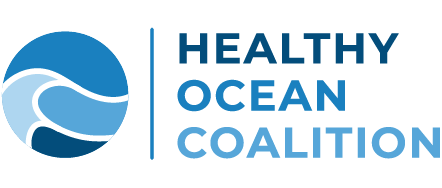Supporting the Florida keys
The Florida Keys National Marine Sanctuary is home to over 6000 species of ocean life and a labyrinth of mangroves, flowing seagrass beds, and colorful coral reefs, all of which are critical to the health of this ecosystem and all the creatures that inhabit it. Unfortunately, this wonderland is at risk. Climate change, water pollution, and coral disease are taking a toll on the Key’s habitats.
NOAA recently released their "Florida Keys Restoration Blueprint" which outlines a plan to establish additional protections within the sanctuary. It is a good start, but we have a long way to go if we are going to save the Keys. We know NOAA wants to do the right thing and restore the Keys--but they’ll face headwinds from special interests who want a less ambitious Sanctuary. If NOAA is going to implement strong protections, they need to hear from the public and from a broad group of organizations--and social media is a good place to start.
Below are the comments Sarah Winter Whelan, our Executive Director, gave to the Florida Keys National Marine Sanctuary Restoration Blueprint Listening Session:
The Florida Keys National Marine Sanctuary is an actual national treasure.
Picture this, small town, Illinois, August 1992.
A seventh grader, newly desperate to learn all she can about the ocean, travels via Amtrak over 1000 miles with her 7th grade biology class, to Key Largo, now nestled within the upper edge of the Florida Keys National Marine Sanctuary.
Over the course of a week, that teenager would snorkel among sharks, visit coral reefs, and experience bioluminescence for the first time. She would learn, from local Floridians, the value and importance of the Florida Keys National Marine Sanctuary.
If you haven’t guessed it, that seventh grader was me. I am Sarah Winter Whelan, Executive Director of the Healthy Ocean Coalition, a network of grassroots organizations working for a healthy and resilient ocean. That trip set up a life-long respect and sense of responsibility for the ocean and places like the Keys in a kid who grew up among corn and soybean fields. It propelled me to a marine science undergraduate degree and helped nurture my career these past 16 years in ocean conservation and community building.
So, on behalf of my 13-year old self, thank you, NOAA, for taking these steps forward in the Blueprint towards a better future for these precious ecosystems. Yet there is much we still need to do to protect the endangered sea turtles, manatees, fish and coral, all of which contribute to the Keys’ economic health. This priceless place is one that generations to come must be able to depend upon and hopefully allows more kids to find and explore their love of the ocean here.
Tonight I’d like to specifically lift up 3 important needs identified by local communities for the Blueprint’s final iteration:
First, to fully protect the Sanctuary’s shallow areas, which are home to seagrass meadows and fish nurseries, I urge NOAA to adopt a Sanctuary-wide regulation that would require Idle speeds within 100 yards of all shorelines throughout the Sanctuary.
Second, we know that large, contiguous highly protected marine reserves are the most effective way to preserve biodiversity and create resilience to climate change. I am so glad to see the increase in strongly protected marine zones & the increase in Sanctuary acreage strongly protected and want to see NOAA include large areas currently left out in line with what other commenters have called out, including the Tortugas Corridor, the two shore-to-reef protected areas from Key Largo to Carysfort Reef & Long Key State Park to Tennessee Reef in its final rule.
Finally, thank you for the strong protections at the healthier reef systems, please keep Sanctuary regulations consistent and keep the deeper reefs closed to all forms of fishing and anchoring.
Thank you for listening to how the Keys greatly factored into my own origin story and my hope it will continue to do the same for other kids in the future. Thank you for your time.

